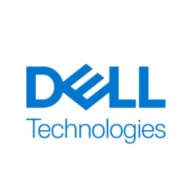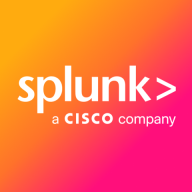

Splunk AppDynamics and Moogsoft compete in the IT monitoring solutions category, with each emphasizing different strengths. Splunk AppDynamics appears to have an edge due to its advanced application performance monitoring and comprehensive transaction tracking capabilities.
Features: Splunk AppDynamics provides deep-dive monitoring capabilities, comprehensive end-to-end transaction tracking, and insights into latency and SLA compliance, with features like transaction snapshots and application topology discovery. Moogsoft focuses on event correlation and noise reduction using machine learning, valued for its capabilities in situation creation and incident management.
Room for Improvement: Splunk AppDynamics could improve support for complex environments, network integration, and dashboard creation tools. Moogsoft needs enhancements in real-time data aggregation, integration capabilities, and machine learning applications to streamline operations further.
Ease of Deployment and Customer Service: Splunk AppDynamics offers flexible deployment options across on-premises, public, and hybrid clouds with responsive support, although lower priority issue response times could improve. Moogsoft is recognized for straightforward setup and competent customer service, with a desire for interactions aligning with industry norms.
Pricing and ROI: Splunk AppDynamics is a premium solution with a complex licensing scheme, seen as costly for extensive setups but worth the investment due to its functionality in resolving performance issues. Moogsoft is more cost-effective, particularly for large data volumes, offering competitive pricing and effective cost management. Both solutions demonstrate a positive ROI, with Splunk AppDynamics focusing on comprehensive application insights and Moogsoft on efficient incident management.
ROI depends on how we integrate our IT operations with Moogsoft, as it can reduce our workload, downtime, and resolution time effectively, ultimately delivering better solutions based on mean time to resolution.
Overall, as a production gatekeeper, we achieve at least 50% efficiency immediately, with potential savings ranging from 60 to 70% as well, reinforcing why it is a popular tool in the banking industry.
According to errors, exceptions, and code-level details related to their application performance on a daily basis, the application development team tries to help with Splunk AppDynamics to reduce errors and exceptions, which helps the end users get application availability and feel more confident.
To understand the magnitude of it, when the company asked to replace Splunk AppDynamics with another tool, I indicated that for the proposed tool, we would need five people to do the analysis that Splunk AppDynamics enables me to do.
AppDynamics is much more helpful.
We got a contact, an account manager, to work directly with for technical support.
They help us resolve any issues raised by our team relating to operations, application instrumentation, or any other issues.
We have reached maximum capacity in our tier, and extending capacity has not been cost-effective from Splunk's perspective.
I would rate the scalability of Splunk AppDynamics as a nine out of ten.
I assess how Splunk AppDynamics scales with the growing needs of my organization as good, since we are growing and adding more servers.
Sometimes Moogsoft experiences stability issues due to bugs or internal problems, leading to downtime.
It is necessary to conduct appropriate testing before deploying them in production to prevent potential outages.
There are no issues or bugs with the 20.4 version; it is very stable with no functionality or operational issues.
Splunk AppDynamics is superior to any alternative, including Dynatrace.
Introducing machine learning and AI features would enhance Moogsoft, streamlining IT operations, incident detection, and response management.
Splunk AppDynamics does not support the complete MELT framework, which includes metrics, events, logging, and tracing for the entire stack.
If AppDynamics could develop a means to monitor without an agent, it could significantly improve application performance and reduce potential problems.
A good integration with Splunk would be very interesting, as Splunk is a good product for logs, and that part is currently missing in Splunk AppDynamics.
We completed a three-year deal for Splunk and for AppDynamics, which costs millions of dollars.
Customers have to pay a premium price, however, they receive considerable value from the product.
All these solutions at the moment are cheap, but it is like paying for insurance; you pay insurance to avoid major damage.
Moogsoft offers various benefits, including incident response, reduced noise alert fatigue, increased availability and uptime, helping companies gain a better understanding of their IT environment, proactively addressing issues, and improving services.
We have multiple tools, but end users prefer to use Splunk AppDynamics because their portal navigation is very simple and clear.
The real user monitoring and digital experience monitoring effectively track actual user experience with the applications, including page loading, interaction time for both desktop and mobile applications.
This is the best feature because, although you can't monitor a whole application at once, Splunk AppDynamics gives you the option that if there is any failure—simple failure regarding anything set up as per our use cases—you will get an alert.
| Product | Market Share (%) |
|---|---|
| Splunk AppDynamics | 2.8% |
| Moogsoft | 0.9% |
| Other | 96.3% |


| Company Size | Count |
|---|---|
| Small Business | 5 |
| Midsize Enterprise | 4 |
| Large Enterprise | 11 |
| Company Size | Count |
|---|---|
| Small Business | 55 |
| Midsize Enterprise | 36 |
| Large Enterprise | 189 |
Moogsoft is an AI-based solution that ensures continuous availability and prevents downtime by utilizing machine learning and advanced correlation on your organization’s stack. Moogsoft detects incidents before they can escalate, notifies the proper response teams, and applies machine learning in order to understand patterns to help prevent similar issues in the future.
Moogsoft sits on top of an organization’s production stack and extends across automation, service management, log indexing, and notification tools. Algorithmic Noise Reduction automatically reduces event volumes to unique alerts without relying on rules, filters, or models. This enables teams to analyze all monitoring ecosystem events with no noise and no blind spots.
With Moogsoft extensive integration options, users can aggregate all their observable data into a single location and create automated workflows to detect and remediate incidents in third-party systems, ensuring their system remains unharmed. Moogsoft’s anomaly detection tools detect incidents as they emerge, allowing security teams to respond swiftly before they impact customers.
Teams can easily set up their own integrations using Moogsoft’s REST API and webhook. The solution provides guidance for each step, allowing users to import data from whatever tool they need with just a few mouse clicks.
Some of Moogsoft’s top features and benefits include:
Reviews from Real Users
Moogsoft stands out among its competitors for a number of reasons. A few major ones are its monitoring tools, its user-friendly interface, and its strong AI capabilities.
Vivek S., an O&M Lead at a communications service provider, writes, “The most valuable feature is the monitoring manager. Different components and different monitoring tools integrate with and send data to Moogsoft.
This is a user-friendly solution. It is very easy and very comfortable to use, with everything available on a single screen.
The AI component allows you to check previous cases and diagnose problems easily. It will show you what happened last time the same event occurred.”
Splunk AppDynamics enhances application performance monitoring with advanced diagnostics and real-time insights, offering seamless end-to-end transaction tracking and infrastructure visibility.
AppDynamics provides critical tools for businesses to analyze application behavior and performance. Through innovative features like transaction snapshot analysis and adaptable dashboards, users can quickly identify and address issues, ensuring high levels of system uptime and efficiency. It is designed to support complex environments including Kubernetes and AWS, enhancing user experience by detecting performance issues early. Despite needing improvements in network monitoring and integration, it remains a robust option for tracking application health.
What are the key features of AppDynamics?In industries like financial services and e-commerce, AppDynamics facilitates performance tracking across distributed systems, optimizing infrastructure to meet consumer demands. It excels in environments needing precise transaction monitoring and is pivotal in delivering high value and satisfaction.
We monitor all IT Infrastructure Monitoring reviews to prevent fraudulent reviews and keep review quality high. We do not post reviews by company employees or direct competitors. We validate each review for authenticity via cross-reference with LinkedIn, and personal follow-up with the reviewer when necessary.